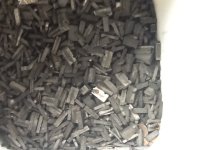I scored 6 drywall buckets of Lino-type today. Got for free all I
had to do was shovel it up from floor. Left from old printing press
in small shop, closed in 1950s. Now people are telling me that
there is all different kinds of type and the spacers have to be
separated. Last time I got some type I went through separating
and Melted separately, don't think it made any difference. Anyone
know their Type? Regardless of what kind of type it is won't it
be good for pistol bullets at medium velocities?
had to do was shovel it up from floor. Left from old printing press
in small shop, closed in 1950s. Now people are telling me that
there is all different kinds of type and the spacers have to be
separated. Last time I got some type I went through separating
and Melted separately, don't think it made any difference. Anyone
know their Type? Regardless of what kind of type it is won't it
be good for pistol bullets at medium velocities?

